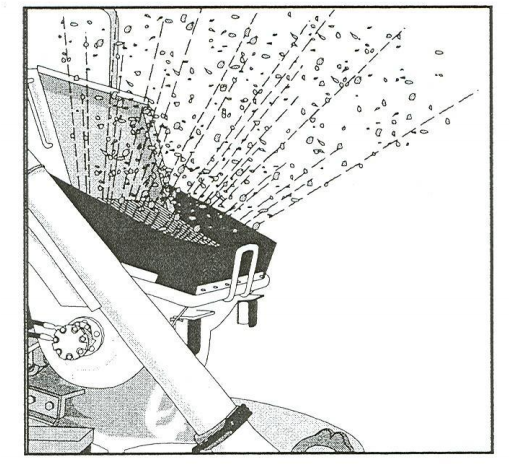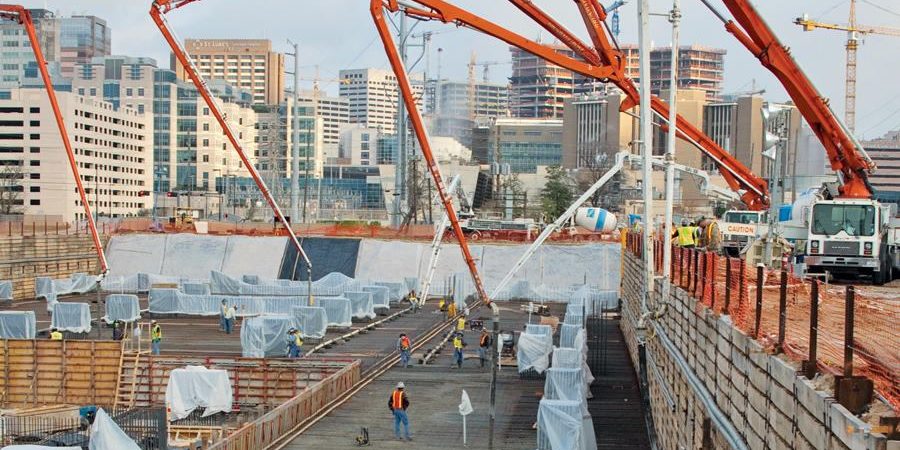1. General
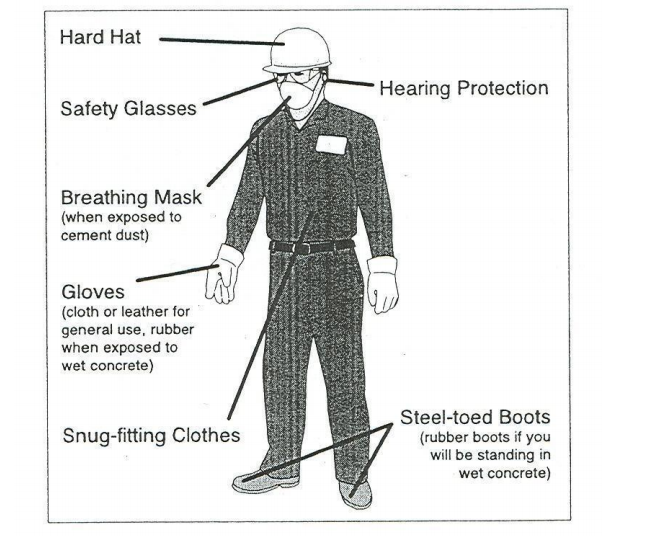
WARNING! Concrete industry professionals should wear Personal Protective
Equipment (PPE) when working near a concrete pump, concrete pump truck, or crane bucket. Proper equipment includes but is not limited to safety glasses, steel toe boots, hard hat, ear protection, and rubber gloves. These items are especially important when working near the hopper or bucket. There may be additional PPE requirements by your company or at the delivery location.
1.2 WARNING! ELECTROCUTION HAZARD! If the concrete pump, concrete pump truck, or crane bucket becomes energized, the electricity will travel through the concrete going in to the hopper and energize the ready-mix delivery vehicle. If you are touching the ready-mix delivery vehicle, the concrete pump, concrete pump truck, or crane bucket, when that happens you could be electrocuted. Make sure to monitor the boom movements of the concrete pump truck. If you perceive a problem, immediately cease discharge of concrete into the pump hopper or crane bucket and pull the concrete delivery vehicle away from the concrete pump, concrete pump truck, or crane bucket and immediately alert the operator.
At no time should any part of a concrete pump, concrete pump truck, or crane bucket (and including the actual crane) become closer than 17 feet of energized power sources. (Company policy may dictate additional distance from an energized power source. Refer to your company’s safety rules or policy manual.)
If concrete pumps, concrete pump trucks or the crane bucket (and including the actual crane) become energized and someone is being electrocuted, NEVER make contact with that person. Do not stand in the concrete or make contact with any steel or equipment on the job unless you are POSITIVE the power has been turned off with your own LOCK OUT/TAG OUT lock! You could be electrocuted, too! Although it will be hard to do, leave the rescue effort to trained experts.
Some high voltage power lines have circuit breakers that may stop the flow of electricity for a short time and then become energized again. You could be electrocuted by standing in wet concrete or by making contact with steel or equipment being used on the job.
If the concrete pump, concrete pump truck, or crane bucket (or actual crane) comes in contact with energized power lines and you are not in or on the concrete delivery vehicle, DO NOT COME IN CONTACT WITH THE CONCRETE DELIVERY VEHICLE. Do not attempt to move the concrete delivery vehicle.
If you are in or on the concrete delivery vehicle and the concrete pump, concrete pump truck, or crane bucket (or actual crane) comes into contact with energized power lines and there is no fire or feeling of electricity, stay put! If there is a fire and you have to exit the concrete delivery vehicle, jump and roll as far away from the concrete delivery vehicle as possible.
NEVER MAKE CONTACT WITH the concrete delivery vehicle AND GROUND AT THE SAME TIME!
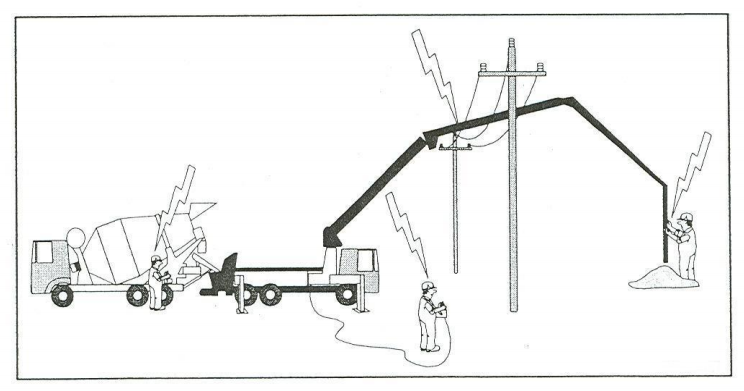
1.3 WARNING! LIGHTNING, ELECTROCUTION HAZARD! Although electrocution due to lightning is rare, lightning should be monitored if in the area. If you feel the risk of a lightning strike, notify the operator that you will be in the cab of the concrete delivery vehicleuntil the threat has subsided.
1.4 WARNING! FALLING HAZARD. Concrete industry professionals should not stand on a concrete pipeline or walk across the pipeline while in use. Concrete pumps or concrete pump trucks can develop pipeline pressures greater than 1000 PSI! Pipelines can move without warning..
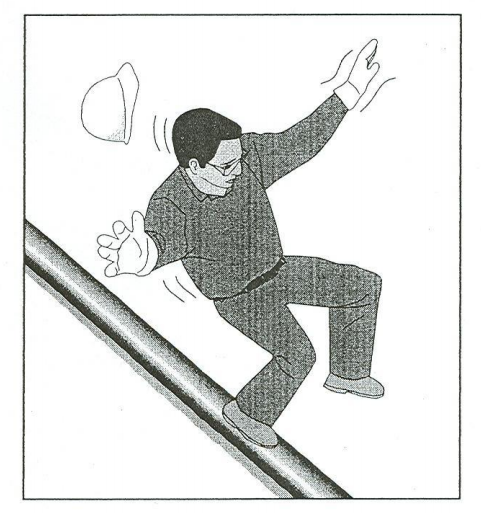
1.5 WARNING! PROJECTILE HAZARD. Concrete industry professionals should stay away when the pipeline is being opened. If pressure remains when the pipeline is opened or if the clamp/pipe breaks, concrete will be ejected with dangerous velocity. The operator of the concrete pump or concrete pump truck is responsible for knowing how to safely remove pressure from the line. You must wear your personal protective equipment near a pipeline.
1.6 WARNING! PROJECTILE HAZARD. Concrete industry professionals delivering the ready-mix to the job site should not touch any concrete pump or concrete pump truck pipe clamps or hoses. Alert the operator immediately if you see a problem!
1.7 WARNING! FALLING HAZARD. Use the “three point rule” when getting on or off concrete pump or concrete pump truck. [NOTE: Access to the pump or pump truck should only be permitted by an authorized representative of the pump or pump truck operator.] The three point rule means that the person must have one hand and two feet or two hands and one foot in contact with a secure surface at all times. Avoid getting on concrete pump or concrete pump truck unless it is absolutely necessary.
1.8 WARNING! PROJECTILE HAZARD. Always wear safety glasses before looking in the hopper. Keep your distance when monitoring the hopper. Never look into the end of a connected pipe or hose.
